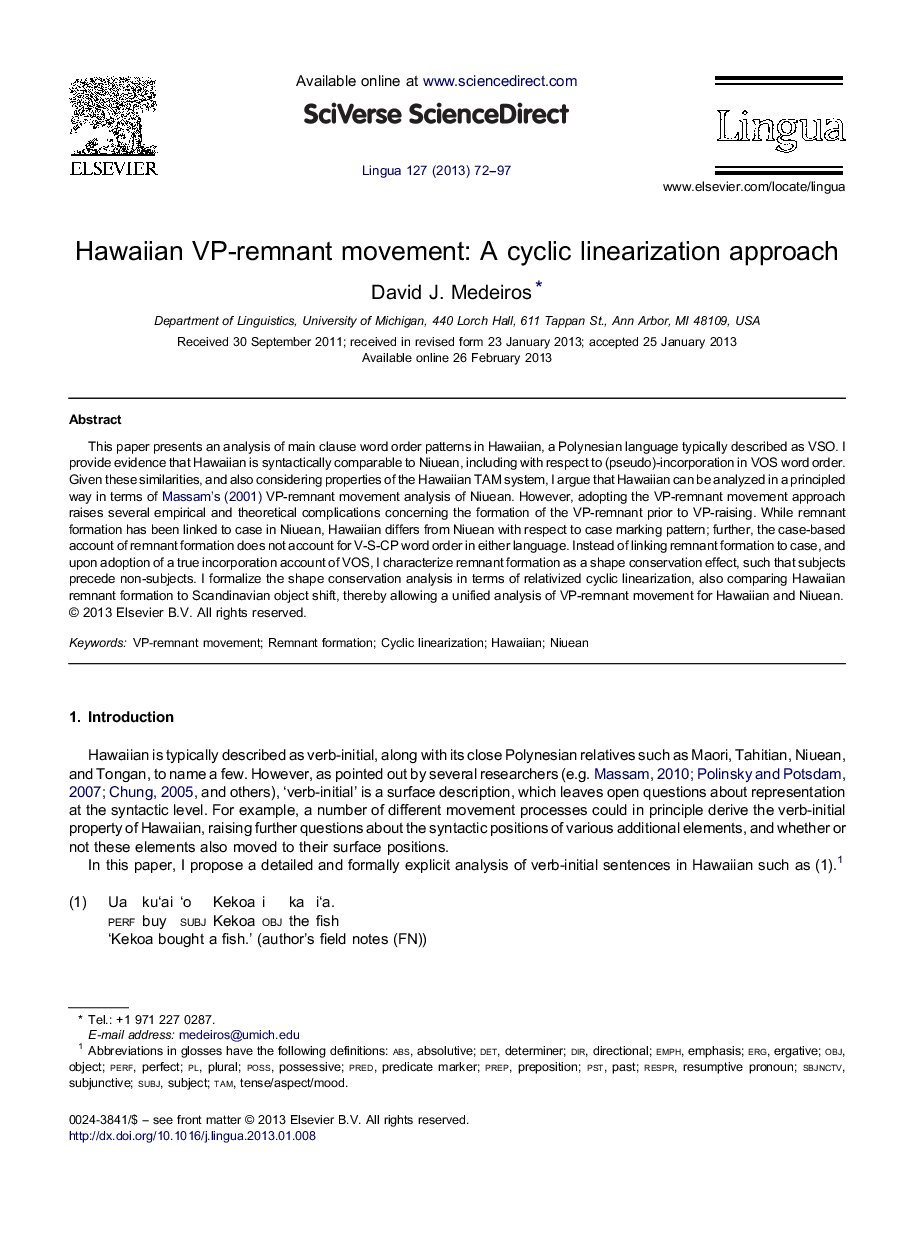| Article ID | Journal | Published Year | Pages | File Type |
|---|---|---|---|---|
| 935719 | Lingua | 2013 | 26 Pages |
This paper presents an analysis of main clause word order patterns in Hawaiian, a Polynesian language typically described as VSO. I provide evidence that Hawaiian is syntactically comparable to Niuean, including with respect to (pseudo)-incorporation in VOS word order. Given these similarities, and also considering properties of the Hawaiian TAM system, I argue that Hawaiian can be analyzed in a principled way in terms of Massam's (2001) VP-remnant movement analysis of Niuean. However, adopting the VP-remnant movement approach raises several empirical and theoretical complications concerning the formation of the VP-remnant prior to VP-raising. While remnant formation has been linked to case in Niuean, Hawaiian differs from Niuean with respect to case marking pattern; further, the case-based account of remnant formation does not account for V-S-CP word order in either language. Instead of linking remnant formation to case, and upon adoption of a true incorporation account of VOS, I characterize remnant formation as a shape conservation effect, such that subjects precede non-subjects. I formalize the shape conservation analysis in terms of relativized cyclic linearization, also comparing Hawaiian remnant formation to Scandinavian object shift, thereby allowing a unified analysis of VP-remnant movement for Hawaiian and Niuean.
► Hawaiian syntax is compared to Niuean and accounted for by VP-remnant movement. ► Case properties do not trigger remnant formation. ► Shape conservation forces remnant formation in Hawaiian and Niuean. ► Relativized cyclic linearization accounts for the shape conservation effect. ► The linearization model can account for cross-linguistic variation.
